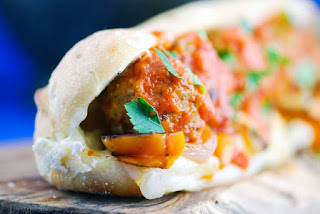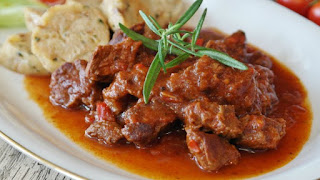How to Make Homemade Jackalberry Fruit Spirits
Using the fruit of the Jackalberry tree is a favorite ingredient of many people in Africa because Jackalberry fruits are often used to brew homemade spirits that contain up to 20 percent alcohol per volume.
You can turn just about any fruit into easy homemade alcohol. Yeast breaks down the fruit sugars during the fermentation process, and you can use just about any type of fruit you want, although some will work better than others will. If using fresh fruit such as Jackalberry, to make homemade alcohol opt for ripe produce with no bruises or blemishes.
The Jackalberry homemade alcohol is made when the pulp, peel and juice is squeezed out of the Jackal berry fruits, yeast add and fermented for a few days in a sealed airtight container and then sieving the liquid. The alcohol content is quite high.
It is estimated to be up to 20% alcohol per volume, depending on the individual Jackalberry tree and the time the liquid has been fermented into alcohol.
The Jackalberry skin is tough but the edible fruit has a chalky, floury consistency with a lemon-sweet flavor. Jackal berry flowers are small and unassuming.
The fragrant, white to pale cream hairy flowers are separate genders, growing on different trees. The females grow individually on a hairy stalk while the males grow in clusters. The fruit only grows on female trees.
The Jackal Berry tree is one of the largest and most splendid species found in the swampy Botswana Okavango Delta. The tree’s deep root supports the Jackal berry growing extremely tall, up to 80 feet, with a trunk circumference of 16 feet.
The bark is dark brown when young, turning dark grey as the tree matures, with a rough texture, forming deep horizontal grooves. The Jackal berry tree is part of the Ebenaceae family and is also known as African ebony.
Ingredients
1 gallon of distilled water 20 peeled, deseeded, crushed Jackalberry fruit
8 cups of white granulated sugar
3 teaspoons active dry yeast
Equipment
5-gallon plastic bucket with bottom spigot and tight-fitting top, sanitized
Clean mesh or cheesecloth bag
Large pot
Fermentation airlock
Wooden spoon
Directions
Once your Jackalberry fruit is clean, mix it in with your water and sugar in a big pot on low heat simmer but do not boil. At the same time, put your yeast into a small dish of lukewarm water to start it reacting.
Once the sugar has dissolved and Jackalberry fruit has broken down, turn the stove off and let the mixture cool. Pour the Jackal berry fruit mixture through a mesh bag into the bucket and then add the yeast mixture into your bucket, gently swirling it to mix well.
Keep all the Jackal berry fruit solids in your mesh bag, inside the bucket. Then attach the fermentation lock sealing it onto the top of the container lid.
Store in a cool, low light area and after 2 weeks, you can check the wine. It should taste slightly alcoholic and very sweet at this step but it has not fully aged. In two months, it should be ready. Strain the wine and store in wine jugs or wine bottles.
More about the Jackalberry fruit
Omwandi, African-Ebony or the Jackalberry tree is found throughout Africa, from Senegal and the Sudans to Namibia and the northern Transvaal in South Africa. The fruit of the Jackalberry tree is a favorite of many people in Africa; fruits are often used to brew homemade-alcohol.
Jackalberry fruit is normally eaten while fresh straight from the tree, especially the sweetest ones ranging in size from lemon to apple-sized. The fruits are dried, eaten raw, pounded, powder mixed with boiled water and millet meal to make up a very sweet and delicious porridge called oshihenyandi.
Jackal berries can be used in breakfast cereals and made into toffee as well as brewed into beer, fermented into wine, and distilled into an ebony brandy. In Namibia, Angola and Zambia the peel and flesh Jackal berries are made into a hot liqueur called Ombike or Kashipembe.

You can turn just about any fruit into easy homemade alcohol. Yeast breaks down the fruit sugars during the fermentation process, and you can use just about any type of fruit you want, although some will work better than others will. If using fresh fruit such as Jackalberry, to make homemade alcohol opt for ripe produce with no bruises or blemishes.
The Jackalberry homemade alcohol is made when the pulp, peel and juice is squeezed out of the Jackal berry fruits, yeast add and fermented for a few days in a sealed airtight container and then sieving the liquid. The alcohol content is quite high.
It is estimated to be up to 20% alcohol per volume, depending on the individual Jackalberry tree and the time the liquid has been fermented into alcohol.
 |
| Fruit of Jackalberry tree |
The fragrant, white to pale cream hairy flowers are separate genders, growing on different trees. The females grow individually on a hairy stalk while the males grow in clusters. The fruit only grows on female trees.
The Jackal Berry tree is one of the largest and most splendid species found in the swampy Botswana Okavango Delta. The tree’s deep root supports the Jackal berry growing extremely tall, up to 80 feet, with a trunk circumference of 16 feet.
The bark is dark brown when young, turning dark grey as the tree matures, with a rough texture, forming deep horizontal grooves. The Jackal berry tree is part of the Ebenaceae family and is also known as African ebony.
How to Make Homemade Jackalberry Fruit Spirits
Ingredients
1 gallon of distilled water 20 peeled, deseeded, crushed Jackalberry fruit
8 cups of white granulated sugar
3 teaspoons active dry yeast
Equipment
5-gallon plastic bucket with bottom spigot and tight-fitting top, sanitized
Clean mesh or cheesecloth bag
Large pot
Fermentation airlock
Wooden spoon
Directions
Once your Jackalberry fruit is clean, mix it in with your water and sugar in a big pot on low heat simmer but do not boil. At the same time, put your yeast into a small dish of lukewarm water to start it reacting.
Once the sugar has dissolved and Jackalberry fruit has broken down, turn the stove off and let the mixture cool. Pour the Jackal berry fruit mixture through a mesh bag into the bucket and then add the yeast mixture into your bucket, gently swirling it to mix well.
Keep all the Jackal berry fruit solids in your mesh bag, inside the bucket. Then attach the fermentation lock sealing it onto the top of the container lid.
Store in a cool, low light area and after 2 weeks, you can check the wine. It should taste slightly alcoholic and very sweet at this step but it has not fully aged. In two months, it should be ready. Strain the wine and store in wine jugs or wine bottles.
More about the Jackalberry fruit
Omwandi, African-Ebony or the Jackalberry tree is found throughout Africa, from Senegal and the Sudans to Namibia and the northern Transvaal in South Africa. The fruit of the Jackalberry tree is a favorite of many people in Africa; fruits are often used to brew homemade-alcohol.
Jackalberry fruit is normally eaten while fresh straight from the tree, especially the sweetest ones ranging in size from lemon to apple-sized. The fruits are dried, eaten raw, pounded, powder mixed with boiled water and millet meal to make up a very sweet and delicious porridge called oshihenyandi.
Jackal berries can be used in breakfast cereals and made into toffee as well as brewed into beer, fermented into wine, and distilled into an ebony brandy. In Namibia, Angola and Zambia the peel and flesh Jackal berries are made into a hot liqueur called Ombike or Kashipembe.
More easy breakfast, lunch and dinner recipes from African Food Love to make right now so you never have to eat or prepare a boring meal again.
- Veggie Okra Stew
- Rice Bread
- Muamba Chicken Stew and Funge
- What Is Fufu and Ugali
- How to Cook Ostrich Meat





